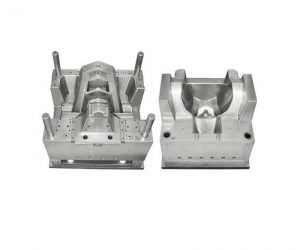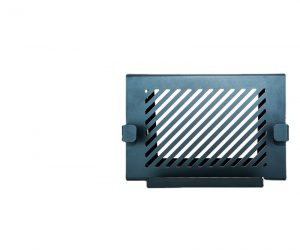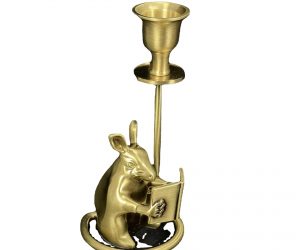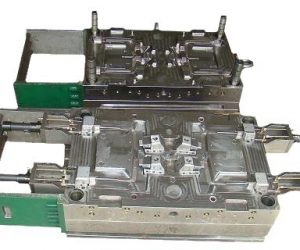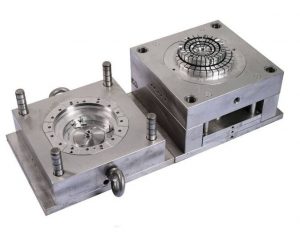First of all, a deep understanding of the basic concepts and processes of mold foreign trade can form the confidence basis. Mastering the relevant laws and regulations of international trade, the payment methods, logistics and transportation, etc. will better enable you to handle various trade affairs. In addition, it will help you better learn the needs and trends of the international market and also let you explore cultural differences in a number of countries and regions, which shall improve your communication and cooperation with customers.
Second, incessant learning and update of knowledge is the basis for competitiveness. While technologies continue to develop and industries continue to change, new technologies and market tendencies keep popping up. In this regard, continued learning and following the latest industrial trends will enable you to timely adjust the business strategy, grasp the market opportunities in time, and avoid disadvantages in competition.
In addition, building a good network in a supply chain is one of the most influential factors for success in mold foreign trade. Building long-term cooperative relations with compatible and reputable suppliers will guarantee product quality stability and time stability of delivery, improve customer satisfaction, and enhance enterprise competitiveness. It is also a very effective way to obtain new customers and retain old ones by participating in industry exhibitions and exchange activities to expand contacts.
Finally, development of a good corporate image and brand will also be very important to success in the field of mould foreign trade.
By providing them with high-quality products and services, and actively responding to customer needs and feedback, we will help customers and our partners establish a good reputation and credibility. Emphasis on marketing and brand promotion, utilizing channels such as the Internet and social media to broaden the company's exposure, is also a critical way to enhance the publicity and competitiveness of the company.
It means that comprehensive knowledge and skills of mold foreign trade, continuous learning, and updating of knowledge, good establishment of a supply chain network, and corporate image will enable you to achieve long-term success in the field of mold foreign trade.
Mold Manufacturing Standards: Understand the international standards and regulations in manufacturing molds. Understanding ISO 9001:2015 and ISO 14001:2015, among other standards, will actually enable you to assure customers of the quality of molds you offer.
Mold Design and Materials: A variety of mold designs and materials will be learned to suit every possible customer need. Understand the strengths and weaknesses associated with the various mold materials: steel alloys, aluminum, composites, among others.
Manufacturing Process: Understand the injection molding process and other mold manufacturing methods. Understand how molds are designed, machined, and tested to ensure you will be able to provide information to customers and address their concerns.
International Trade Regulation: Understand import and export regulations, customs procedures, and documentation requirements of the countries with which you deal. Compliance with trade regulations will ensure smooth and legitimate transactions.
Market Research: Study the market thoroughly to find out potential clients and competitors in target regions. A better understanding of market trends, customer demands, and prices quoted by competitors will help you in the formulation of effective marketing strategies.
Cost Estimation and Quoting: Estimate the mold cost based on several factors like complexity, size, material, and lead time. The right, competitive quote is what really helps in securing projects.
Communication and Language Skills: For the success of mold foreign trade, companies need effective communication with clients coming from abroad. Development in language skill and cultural awareness would bring healthy relations with customers coming from different countries.
After-Sales Support: Offer solid after-sales support through technical assistance, spare part supply, and warranty services. A good reputation in this respect attracts more loyal customers who may give repeat business or refer others to your services. Grasping every knowledge point will help you outline with assurance the major secret of mold foreign trade and further establish your position as a reputable and competitive player in the world market. Continuous learning and keeping updated about the latest trends are also very important for sustaining success under dynamic conditions in this particular field.
You need to have an account to receive US dollars in operation to get the problem of fund flow. Western Union remittance/PAYPAL/borrowing the name of a friend's company and so on are acceptable to receive money.
You've come to gather a few consistent mold customers at other companies. Customers believe that with your help, you are able to help them find the plastic mold that they want to open or complete. You need to communicate with them regularly in order to show them how you can help them. Of course, quotation, shipping, and other skills are very important too-something which will be discussed later.
Let strangers know your strength.
You need to build an English mold website, show all the molds you can make, then link this English mold website to the B2B international platform. Then, it would be easier for customers to find you and understand that you can help them open up the mold they want to open. After that, a foreign trade relationship can be established. You have to find some good free B2B foreign trade platforms or make use of various search engines in developing as many mold customers as possible. It is estimated that the exhibition is not suitable, because, after all, you're amateur mold business investment will be huge.
At least one of the instant online tools such as MSN, SKYPE, and TRADEMANAGER should be available each day to hold contact with your guests.
Make full use of your proficiency in mold to refer to the requirements of customers. Generally speaking, customers need to provide mold customers with mold 3D drawings, specifications-material, color, size, weight, packaging, transport requirements, etc.; samples can also be provided; monthly or annual FORECAST quantity, inspecting standards, transport methods, etc. for the production of products.
When asking from factories, they can first estimate the cost of mold or product according to mold structure, and then work out a good price and quality from several factories. Add appropriate profit quotation to the guest. In my previous operation, I only quoted the ex-factory price instead of FOB or CIF. The advantages of quoting the factory price are as follows:
A. It is suitable for customers to make molds in their own country to avoid exporting and continue the production of products without freight;
B. Even if the customer exports the mold, due to the fact that the weight and volume of the mold is comparatively big, and it will be a big loss if the estimated freight is wrong before the mold be formed. Some mold package are very special. Besides, the shipping cost does not show the strength of your mold.
C. Mold price, the customer will often check and remove parts that cannot be opened or will not open the mold in your place; check the shipping cost frequently.
If customers visit the factory, you need to communicate with the factory and let them do it.
For example, let them say you are a salesperson of their company, and let them add your profit when quoting. For mold suggestions, the range is from 5% to 20%, while product suggestions mainly revolve around 3% to 15%, depending on the mold or product to determine how you add profit. Ask them only to introduce the product, and never give any business card to the customer; likewise, get back the business card sent by the customer right after the event. The customers of mold product are not as good as other products' customers.
Sometimes, customers come to see their molds or ask for mold repair and mold change in terms of product problems. Therefore, customers often go to the factory, or leave their moulds in the factory for many years. There has been a product list. Therefore, how not to make customers lose becomes very important.
Cooperate directly with the mold factory on receiving orders.
Do the mould listing/product listing after massive production of mould, then share by proportion. I have friends doing that. They have no or very little basic salary. They work for a mould factory; actually, they are very free, don't need to follow the rules of the factory because they are not ordinary workers. After the order is issued, they will be divided. Because you want to do a part-time job, I think it is hard for you to operate this business in our company. Generally, companies don't want any engineers to handle both engineering and business matters, and they fear losing customers if the engineers do more. Find a company that can be trusted to work part-time.
Pay more attention to collecting prices from international freight forwarders.
First, select 1-3 price services and other advantageous cooperation; through this, the customer can quote the freight to the customer in time when an inquiry is made. First, quote the ex-factory price; when a customer requests to quote the freight, you add the cost from the factory to the terminal. From where you need to ask the freight forwarder what the costs are. Sometimes of course, the customer will designate one freight forwarder, and the way of operation will be the same.
The mould payment in general is 4/3/3, and sometimes 3/4/3. That is to say, deposit 40% before opening the mould, and 30% deposit should be paid before the first trial production sample delivery. It is advisable to pay this time. Previously, we agreed that 30% deposit should be paid by the customer after the first trial production sample delivery. Later, those trial production samples always cannot meet the customer's standard, so that the second model will take a long time to receive.), 30% of the final payment shall be paid before the mold is delivered.
Product payment: For a private deal, it is much better to pay 30% - 50% deposit before the production order and 70% - 50% before shipment.
